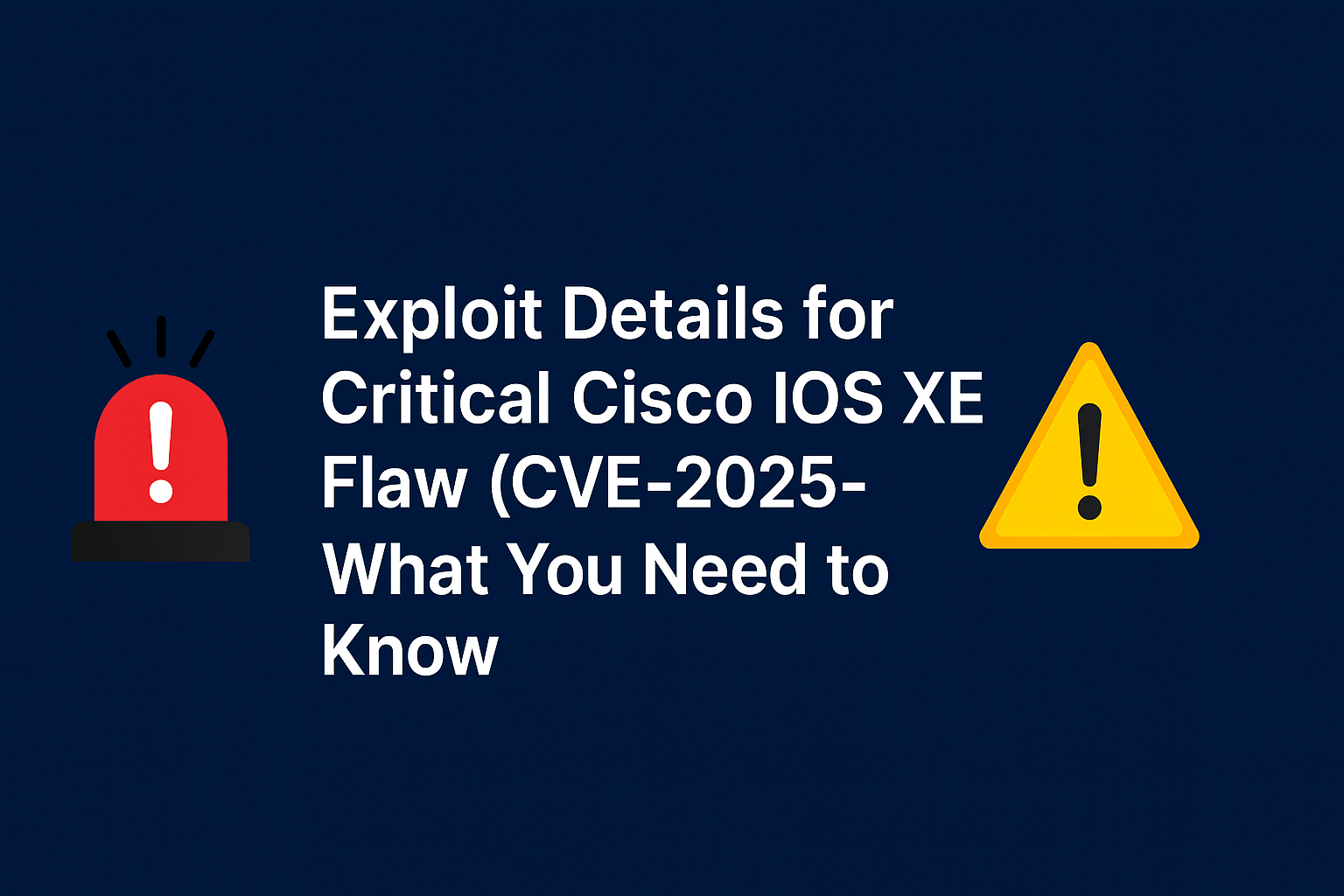Table of Contents
Introduction
A critical CVE-2025-20188 vulnerability in Cisco’s IOS XE Software for Wireless LAN Controllers (WLC) has been disclosed, posing a significant security risk. This flaw allows attackers to upload arbitrary files and execute commands remotely with root privileges. Cisco has recently made the technical details for this vulnerability public, which increases the risk of exploitation. Organizations that rely on affected devices must take immediate action to secure their systems from the exploit.
What Is CVE-2025-20188?
It is a high-severity vulnerability in Cisco IOS XE Software for Wireless LAN Controllers. It is caused by a hardcoded JSON Web Token (JWT) fallback secret used in the backend Lua scripts that handle file uploads. This flaw allows remote code execution (RCE), enabling attackers to upload malicious files, perform path traversal, and execute commands with root privileges on vulnerable devices.
The vulnerability primarily affects Cisco’s Wireless LAN Controllers and is only exploitable when the Out-of-Band AP Image Download feature is enabled.
How CVE-2025-20188 Affects Cisco IOS XE Devices
When the Out-of-Band AP Image Download feature is enabled, It can be triggered, allowing attackers to bypass security controls. The fallback JWT secret (set to “notfound”) is used when the required JWT key is missing, making it easy for attackers to generate valid JWT tokens. This enables the attacker to perform unauthenticated file uploads and gain root-level access to the device.
Affected Devices
The following Cisco devices are impacted by CVE-2025-20188:
- Catalyst 9800-CL Wireless Controllers for Cloud
- Catalyst 9800 Embedded Wireless Controller for Catalyst 9300, 9400, and 9500 Series Switches
- Catalyst 9800 Series Wireless Controllers
- Embedded Wireless Controller on Catalyst APs
These devices are used to manage wireless network infrastructure, and the vulnerability has the potential to disrupt entire corporate networks.
How CVE-2025-20188 Can Be Exploited
Attackers can exploit by performing the following steps:
- JWT Token Generation: Using the fallback secret “notfound”, attackers can generate valid JWT tokens.
- File Upload: The attacker sends a specially crafted HTTP POST request to the /ap_spec_rec/upload/ endpoint to upload arbitrary files to the affected device.
- Path Traversal: Using path traversal, attackers can upload files outside the intended directories, further compromising the device.
- Remote Code Execution (RCE): By overwriting critical configuration files or dropping web shells, attackers can escalate the attack and gain remote control over the device.
Example of Exploitation
Horizon3’s research shows that attackers can exploit CVE-2025-20188 by abusing services like pvp.sh, which monitors specific directories on the device. By overwriting configuration files and triggering a reload, attackers can execute arbitrary commands, further escalating the attack and gaining root access to the device.
Mitigating the CVE-2025-20188 Risk
Organizations must act quickly to mitigate the risks associated with CVE-2025-20188. Here are the recommended steps to protect your Cisco devices:
1. Upgrade to the Latest Version
Cisco has released a patch to fix CVE-2025-20188. Users should upgrade to IOS XE Software version 17.12.04 or newer to close the vulnerability. These versions contain fixes that address the flawed JWT handling process, preventing attackers from exploiting CVE-2025-20188.
2. Disable the Out-of-Band AP Image Download Feature
As a temporary workaround, administrators can disable the Out-of-Band AP Image Download feature. This will close the vulnerable service and prevent attackers from exploiting CVE-2025-20188.
3. Regularly Monitor and Update Systems
Regular monitoring is essential to detect potential attacks and vulnerabilities. Administrators should:
- Regularly check system logs for signs of unusual file uploads or unauthorized access attempts.
- Ensure that devices are up-to-date with the latest patches and security updates.
- Use secure authentication mechanisms to protect against unauthorized access.
4. Restrict Access to Vulnerable Devices
Ensure that access to Cisco devices is limited to trusted networks and IP addresses. This will reduce the attack surface and prevent attackers from exploiting CVE-2025-20188 remotely.
Why Real-Time Vulnerability Monitoring Is Essential
The release of CVE-2025-20188 demonstrates the importance of real-time vulnerability monitoring. Exploits for vulnerabilities like this can spread rapidly, especially once technical details are made public. Organizations that fail to monitor vulnerabilities are at an increased risk of attack.
Real-time monitoring enables organizations to detect vulnerabilities and respond immediately. With tools like Vulert, companies can stay informed about emerging threats and ensure they are protected before exploits can be weaponized. It offers a comprehensive vulnerability monitoring solution for organizations seeking to stay ahead of threats like CVE-2025-20188. The Vulert Vulnerability Database provides up-to-date information on critical vulnerabilities, including CVEs, exploit details, and remediation guidance.
Key Features of Vulert:
- Real-Time Alerts: Receive notifications as soon as vulnerabilities are discovered, enabling quick action.
- Comprehensive Vulnerability Database: Access detailed reports on CVE-2025-20188 and other vulnerabilities, including mitigation advice.
- Automated Dependency Scanning: Vulert scans your open-source dependencies to detect vulnerabilities and ensures your software is always up-to-date.
- Proactive Security Monitoring: Stay ahead of attackers by continuously monitoring your software for vulnerabilities and potential exploits.
Conclusion
CVE-2025-20188 is a critical vulnerability that impacts Cisco’s IOS XE Software for Wireless LAN Controllers. With the release of exploit details, the risk of exploitation has increased, making it crucial for organizations to take immediate action.
By upgrading to the latest patched version of IOS XE Software, disabling the Out-of-Band AP Image Download feature, and using tools like Vulert for real-time monitoring, organizations can better protect their devices and networks from exploitation.
FAQ
How can CVE-2025-20188 be exploited?
Exploitation of CVE-2025-20188 occurs when attackers generate valid JSON Web Tokens (JWTs) using a hardcoded fallback secret (“notfound”).
How can Vulert help me track vulnerabilities ?
Vulert provides real-time vulnerability monitoring, ensuring you are alerted immediately when new vulnerabilities are discovered, you can track and mitigate open-source threats, ensuring your systems remain secure.
4. How can I protect my devices from CVE-2025-20188?
To mitigate CVE-2025-20188, upgrade to IOS XE version 17.12.04 or newer, and consider disabling the Out-of-Band AP Image Download feature.
